|
|

In May 2007 I began reporting for Current Science, the children's science magazine. The publication has
one million readers across the country and is aimed at middle school students.
The magazine's editor asked me to adapt my reporting on Specialist Jon Town and the personality disorder
scandal for his young readers. Since my piece on personality disorder, I've been reporting on everything from
global warming and wildfires to the international politics of drugs and the art of creating perfume.
 |
|
Follow the Leaders
For many Americans, going to the doctor is pretty routine. Your illness is diagnosed, you’re prescribed medication, and you’re sent home with some advice on how to stay healthy.
But for the low-income residents of Washington Heights, a largely immigrant community in New York City, getting medical care can be a lot more complicated. More than 54,000 of them don’t have medical insurance. Seeing a physician can take hours of waiting in line. And when they do reach the physician, the orders they’re given can be hard to follow.
“Even if their illness is easily treatable with a prescription, receiving one is often the beginning of a whole new set of challenges,” notes Komal Kothari, project coordinator for the nonprofit organization Health Leads.   |
| |
 |
| |
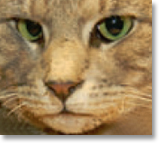 |
|
Code of Misconduct
The crime shocked Brooklyn, New York. In October 2008, a one-year-old tabby cat named Tommy Two Times was found severely wounded. Someone had stepped on the cat, soaked him with lighter fluid, and then set him on fire.
Who committed the crime, and how could police and prosecutors prove the culprit’s identity? For years, investigators in animal abuse cases had struggled to answer such questions. Animal victims couldn’t name their abusers, so police depended on witnesses to expose the abusers’ identities.
Those days are over. Today investigators have a powerful tool to finger the perpetrators of animal cruelty: deoxyribonucleic acid (DNA) evidence.   |
| |
 |
| |
 |
|
Glassical Music
In a music career that has spanned six decades, Jamey Turner has
mastered an orchestra’s worth of instruments—piano, violin, flute, clarinet, saxophone. But one instrument remains closest to his heart: the glass harp.
Glass harp? Turner chuckles at the question. The instrument, he admits, is not well-known and can’t be found in a music store. It’s a collection of dinner glasses—common wine goblets that can be purchased in any housewares department. By rubbing the rims of the glasses, Turner produces musical notes. And by selecting glasses of different types and filling each one with a different amount of water, he can play every note in the musical scale, from A to G-sharp.   |
| |
 |
| |
 |
|
Cutting Edge
Peter Costantino is rushing through the halls of a hospital in New York City. He stops at the doors of an operating room, slips on a surgical mask, and turns to an assistant. She assures him that the patient has been prepped and is ready for surgery. Costantino nods, steps into the room and pulls on a pair of yellow rubber gloves.
On the operating table a middle-aged, Asian American man lies fully sedated, covered by a blue plastic sheet. Costantino turns toward the heart rate monitor and confirms the steady beeping of the patient's heart. Then he picks up a long metallic tool, takes a slow breath and inserts the tool deep inside the patient's nose.   |
| |
 |
| |
 |
|
Gas Leaks
In 2006 a representative from Cabot Oil & Gas showed up at Ronald Carter’s door with a paper, a pen, and an offer: Grant his company ownership of the natural gas that lay deep below Carter’s home, and Cabot would pay him $25 for every acre of his property.
It was a tempting deal. Carter lives in Dimock, Pa., a town with about 1,000 residents. A retired assembly line worker, he and his wife, Jean, live in a trailer on a limited budget with 75 acres of mostly wilderness property to their names. Twenty-five dollars times 75 acres meant $1,875 his family could truly use.
Still, Carter was concerned: If he signed, what would happen to his home? And what would happen to the well his family had been drawing freshwater from for generations?   |
| |
 |
| |
 |
|
Crossing the Line
Jon Rossman was one of the top students in his class before his life ran off the rails. In middle school he discovered alcohol, then marijuana. After he got his driver's license at 16, he and his buddies started driving south from San Diego to score illegal drugs in Mexico.
"Tijuana was just swimming in drugs," he says. "You'd have 10-year-olds who were high on methamphetamine, their pupils bigger than marbles, running up to you to sell you keychains, flowers, whatever they could get their hands on. We'd load our car with drugs and drive it home. Then we'd sell the stuff at our school."   |
| |
 |
| |
 |
|
Scents and Sensibility
Maria McElroy traveled to Asia to discover the world. Instead, she found her nose. The New York painter witnessed an incense ceremony in Japan where sticks of scented wood were burned. "My brain was just mesmerized by the smell," McElroy said. She returned home determined to make a similar impact with her art.
Alexis Karl made the same transition. Like McElroy, she began her career as a painter, and she was known for her wild canvases and thick brush strokes of bright yellow, pink and purple. She has since set aside the brushes and traded her oil paints for rose oil, jasmine oil, and citrus oil.
Today McElroy and Karl are two of the country's leading perfumers. "Creating perfume," says Karl, "is just a step away from painting. I used to draw the body on paper and canvas. Now the body is my paper. The skin is my canvas."   |
| |
 |
| |
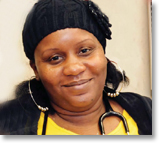 |
|
Driven to Serve
Wake up at sunrise any day in New York City, and you might catch a glimpse of Tracy Jones steering her van through the crowded streets. Jones doesn't transport packages for the post office or vegetables to local supermarkets. She delivers something far more important: medical care to New Yorkers in desperate need.
Jones drives the van for Project Renewal, a charitable organization that serves the city's 37,000 homeless residents, providing free medical care out of its mobile medical office.
The MedVan crisscrosses New York's poorest neighborhoods, stopping at soup kitchens and homeless shelters, where sizable crowds gather to be treated for everything from sprained ankles to asthma to acquired immune deficiency syndrome (AIDS).   |
| |
 |
| |
 |
|
Blood Mineral
Ever wonder where the metal inside your MP3 player comes from? Chances are the source is an impoverished country in the heart of Africa: the Democratic Republic of the Congo.
Though Congo’s people are desperately poor, their land is stunningly rich in diamonds, gold, silver, tin, uranium and a mineral called coltan. To the untrained eye, coltan looks worthless. But it contains one of the most valuable metals on Earth: tantalum. It’s that metal that helps power cell phones, MP3 players and video game consoles.
“Coltan is vital to the function of modern society,” says Andrew Campbell, a professor of mineralogy at the New Mexico Institute of Mining and Technology.   |
| |
 |
| |
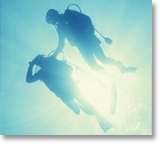 |
|
Buoyed Spirits
Cody Unser comes from sports royalty. Her father, race car
driver Al Unser Jr., won the Indianapolis 500 twice. Her grandfather, Al
Unser, won the famed auto race four times.
By middle school, Cody was forging her own path to athletic glory. She raced snowmobiles, played basketball and competed in gymnastics.
All that changed when Unser was 12. Shooting hoops one day, she suddenly had difficulty breathing. Her head hurt, and her legs went numb. Doctors diagnosed transverse myelitis (TM), a rare neurological disorder.   |
| |
 |
| |
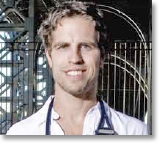 |
|
Dr. Internet
Going to the doctor can be a pain. You wait a week for your appointment, then wait again in the waiting room. When you finally get to see the doctor, you’re rushed in and out the door in just a few minutes.
Jay Parkinson is changing that. They call him Dr. Internet. He’ll see you right away via the World Wide Web. E-mail, instant messaging, video chat—there are a host of ways to contact him.
“What people want is a doctor in their lives, someone they can turn to when they have a medical question,” says Parkinson.   |
| |
 |
| |
 |
|
Inner Vision
I had my first seizure on Thanksgiving Day, 1991. I was 13 years old. The night before, I had attended a rock concert with a family friend. At the concert, we had a bitter disagreement. I came home in a rage.
At 4:30 in the morning, I began to convulse. I started to shake and drool. My eyes rolled to the back of my head. I urinated all over my bed. My mom called 9-1-1.
Doctors at the hospital diagnosed epilepsy, a medical condition that causes seizures.  
|
| |
 |
| |
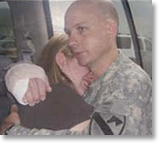 |
|
War Torn
Chuck Luther woke up in a cold sweat. Nightmares again. The former Army sergeant was home in Killeen, Texas. But in his dreams, he was still in Iraq, where he had led an elite unit that battled insurgents.
Two years earlier Luther had been stationed in a combat outpost north of Baghdad when a mortar blast exploded nearby and knocked him to the floor. Luther survived the attack. However, the jolt to his head damaged his hearing and left him with severe headaches.
Luther was also plagued by visions of the mortar attack.  
|
| |
 |
| |
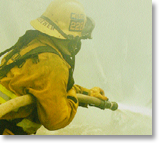 |
|
Fire Fight
Steve Matthews knows the science of fire. He teaches thermodynamics—the relationship of heat to other forms of energy—at Merritt College in Oakland, Calif. And 17 years ago, he lost everything he owned in a wildfire.
When Matthews and his wife saw the fire coming, they grabbed a few photo albums and fled. Returning the next day, there wasn't much they could do but sift through ashes.
"The wheels on our new car were gone—the rims we just puddles of aluminum," he told Current Science.  
|
| |
 |
| |
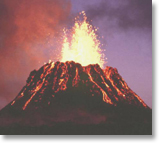 |
|
Big Bang
The small island of Sumbawa in the Indian Ocean is home to Mount Tambora, one of the largest volcanoes in the world. In April 1815, Tambora blew its top in the biggest volcanic eruption in recorded history. The blast was monumental—it was heard 2,575 kilometers (1,600 miles) away—and altered Earth's climate the following year.
Strangely enough, little is known about Tambora or its 1815 eruption. Chances are you've heard about the 1980 eruption of Mount St. Helens in Washington and the legendary 1883 explosion of Krakatau in Indonesia. But Tambora—who knew?  
|
| |
 |
| |
 |
|
Meltdown
Don't let the name fool you. Greenland is hardly the lush oasis that its name implies. It looks more like the barren ice world of Hoth from Star Wars, with more than 1.7 million square kilometers (660,000 square miles) of Arctic ice covering almost all of its mainland.
At least, that's the way it's been for the last two million years. Today Greenland is changing. The largest island in the world is melting, as is much of the Arctic region. Recent studies show that at least 217 cubic kilometers (52 cubic miles) of Greenland's ice sheet are now melting every year.  
|
| |
 |
| |
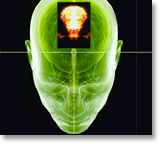 |
|
A Second War
Jon Town sits on the front porch of his suburban Ohio home, nursing a cigarette. With a tired voice and bloodshot eyes, the 27-year-old veteran describes the headache that's been gnawing at him for months.
Town used to be a vigorous, young soldier, a U.S. Army specialist honored a dozen times for his sharp mind and leadship skills. He dreamed of serving in the military the rest of his life.
That dream evaporated October 19, 2004, the day Town was knocked unconscious by a rocket in Iraq.  
|
| |
|